About Us
The Oklahoma Department of Emergency Management (OEM) prepares for, responds to, recovers from and mitigates disasters and emergencies. The department maintains the State Emergency Operations Center, which serves as a command center for reporting emergencies and coordinating state response activities. OEM delivers service to Oklahoma cities, towns, counties, tribes and other public and private sector entities through the network of more than 300 local emergency managers.
OEM also maintains, regularly updates and exercises the State Emergency Operations Plan. The department provides funding and/or assistance to local emergency management departments throughout the state.
Community Preparedness: For more effective response to a disaster, OEM helps plan, promote and conduct local, state and federal exercises to test response capability. The department also offers numerous training courses throughout the year.
Emergency Response: During emergencies, OEM coordinates state emergency operations, including:
- Monitoring potentially severe events
- Evaluating the possibility for securing state, federal disaster assistance
- Managing state and local resources
- Providing emergency public information
- Developing and distributing situation reports
- Conducting preliminary damage assessments
Disaster Recovery: Following a state or federal emergency or disaster declaration, OEM is responsible for providing quick and efficient delivery of state and federal aid to those affected by the event. This includes coordinating the efforts of federal, state, local, volunteer and private organizations to provide relief and establish disaster recovery centers. The agency conducts public information, administers individual and public assistance programs as well as disaster mitigation projects.
Hazard Mitigation: The mitigation program is available to local communities across the state to assist them with identifying and implementing long-term hazard mitigation measures before, during and after major disaster declarations. Communities are encouraged to work with the state mitigation officer to develop an ongoing program to identify hazards and decide the best way to reduce or eliminate them.
Contact Us
If you need to contact us, this page will help you find the contact information you need.
OEM Leadership
The OEM director is appointed by and reports to the Governor.
| Director - Annie Mack Vest |
| Chief Operations Officer - John Dean |
| Chief Financial Officer - Brianna Thomas |
| Senior Advisor - Steve Palladino |
| Public Affairs Director - Keli Cain |
| Preparedness & Response Division Director - Kevin Enloe |
| Disaster Recovery Coordinator - Samuel Rauh |
| Recovery Division Director - Sofia Checketts |
| Resilience Division Director - Vacant |
| Technology Solutions Manager - Zak Legarda |
| State 911 Coordinator - Lance Terry |
History of the Department
OEM was created as the Department of Civil Defense by legislative action in 1951. Soon after its creation, the Civil Defense agency and the Department of Emergency Resources Management were combined into one unified disaster aid organization. Today, the department serves as the state's liaison with federal and local agencies on emergencies of all kinds. The department is located on the State Capitol Complex.
In 2016, the passage of the Oklahoma 9-1-1 Management Authority Act placed the office of the State 9-1-1 Coordinator within OEM. The State 9-1-1 Coordinator reports to both the OEM director and the Oklahoma 9-1-1 Management Authority. Find more information on the Oklahoma 9-1-1 Management Authority website.


